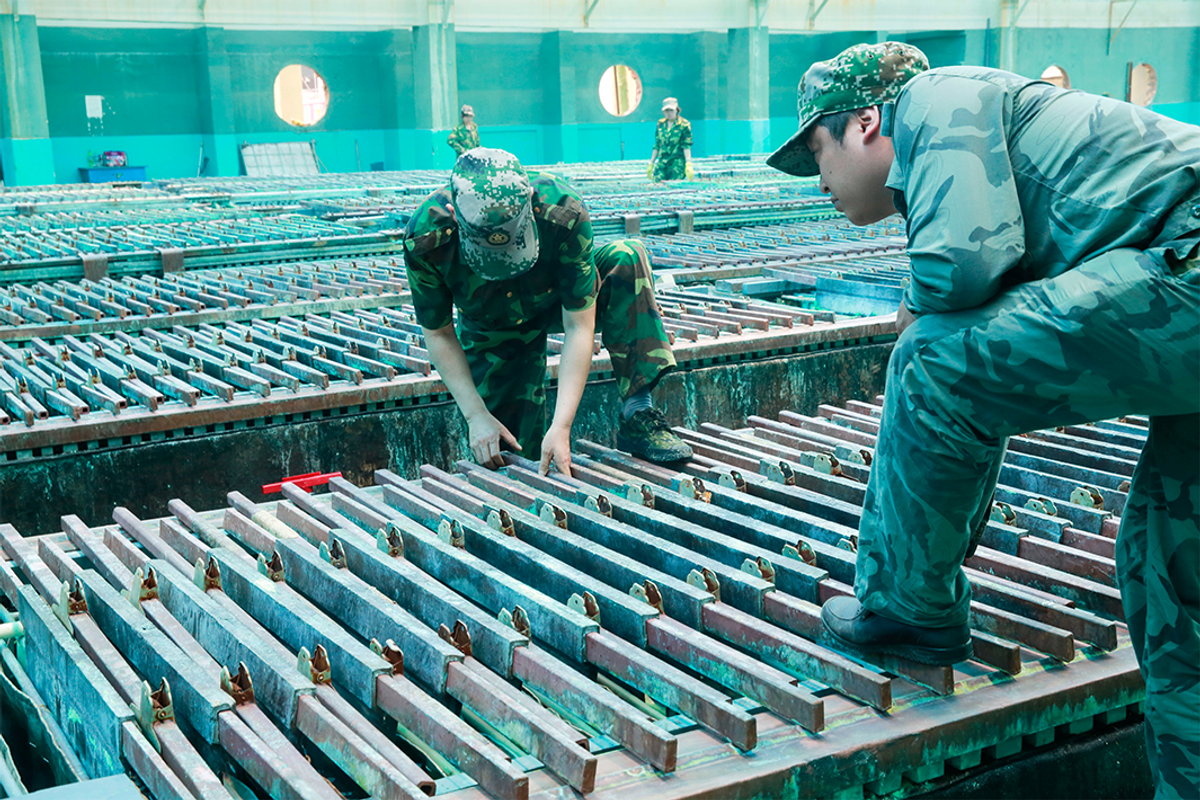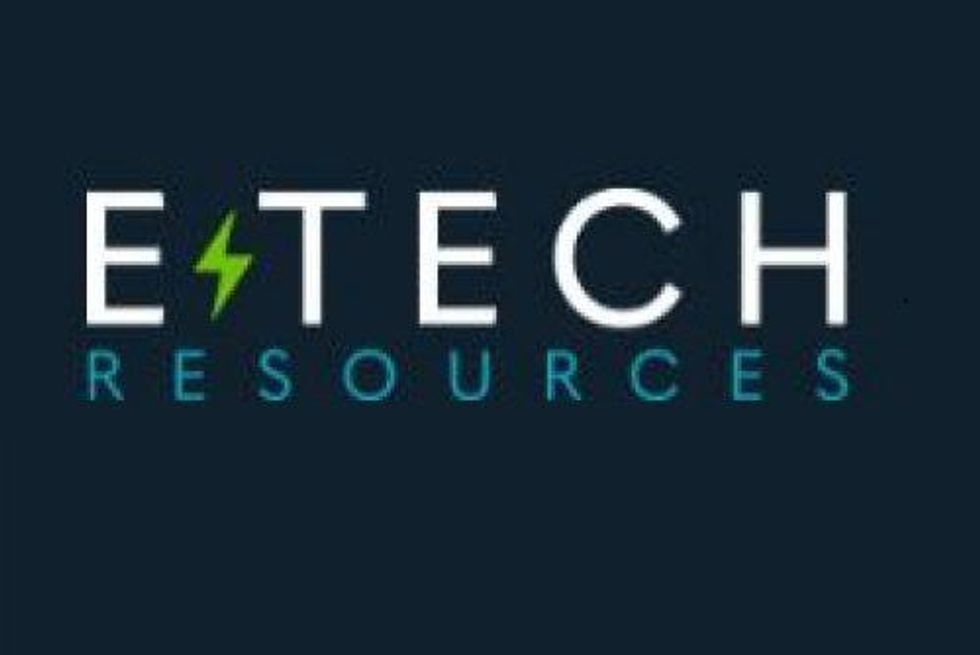Reducing Reliance on China for Rare Earths Production and Processing

With China controlling nearly 90 percent of global REE processing and 60 percent of global supply, western governments are ramping up efforts to develop and support new REE production and processing technologies.
Experts have long warned that global overreliance on China for the production and processing of rare earth elements (REEs) was akin to a house of cards — and the Chinese government keeps proving them right.
In December 2023, China announced a ban on the export of multiple technologies related to REE extraction processing, including those used in the production of rare earth magnets. Rather than a new development, this announcement was simply the latest in a series of restrictions implemented over the previous year. Other banned exports include extraction technology, separation technology and rare earth alloys.
In response, governments around the world are ramping up their efforts to strengthen alternative sources for REE production and processing. There is considerable investment potential to be found in these efforts, provided one knows where to look.
By understanding the global REE market and what projects and technologies are gaining traction outside China, investors can identify and evaluate promising REE stocks.
An unsustainable market dynamic
At present, China is responsible for nearly 90 percent of all REE processing and 60 percent of global supply. Part of the problem, notes Reuters, is the solvent extraction process China uses to refine the critical minerals. Though highly effective, western companies have historically struggled to deploy it due to a combination of technical complexity and environmental concerns.
China, unfortunately, has no such concerns. Much has already been written about the dismal state of the Chinese mining sector. Kachin State in Myanmar, for instance, is dominated by rare earths mines that cover a surface area roughly the size of Singapore. Many of these mines are entirely unregulated and unsafe for both the people and the environment.
Although the Chinese government recently began flirting with sustainability as it pursues a transition to electric vehicles, it has actually been ramping up rare earths production over the past several years. This is in spite of the country's stated policy of shifting away from REE production to REE processing.
A report by Harvard International Review notes that producing a single ton of rare earths yields roughly 2,000 tons of toxic waste. The report further adds that Bayan-Obo, located in Inner Mongolia, China, and the largest rare earths production and processing facility in the world, has to date produced over 70,000 tons of radioactive thorium. This hazardous material is stored on site in a tailing pond, where it has contributed heavily to groundwater toxicity.
Moreover, conventional solvent extraction also requires significant volumes of energy and water. One report noted that the process is responsible for roughly 30 percent of REE production's environmental impact, adding that it could also contribute heavily to global warming, eutrophication of aquatic environments, and toxicity in humans.
As demand for REEs continues to increase, so too will production and processing, resulting in potentially more damaging environmental consequences. This paradigm arguably makes it functionally impossible to truly achieve carbon neutrality.
Finding a way forward through innovation
In recent years, western companies have made enormous strides in developing cleaner, more efficient solvent extraction techniques. Emerging production and processing strategies are considerably more sustainable, eschewing harmful chemicals and producing considerably less waste. Examples of technologies and techniques include:
Circular processing
In 2020, the Saskatchewan Research Council (SRC) and the Saskatchewan government announced plans to create Canada's first rare earths processing facility. The first-of-its-kind facility combines proprietary extraction cells, metal smelting and hydrometallurgy into a fully integrated process supported by artificial intelligence. More importantly, the facility will emit neither water nor waste. Instead, everything it produces will be recycled and reused.
MP Materials (NYSE:MP) has taken a similar approach with its Mountain Pass rare earths mine and processing facility, developing it into a completely self-contained operation with a dry tailings facility and state-of-the-art water recycling systems.
Aclara Resources’ (TSX:ARA) Circular Mineral Harvesting process to extract clean rare earth minerals follows the principles of circular processing, by recirculating up to 95 percent of the water used and 99 percent of a common fertilizer main reagent. Aclara also recently joined the United Nations Global Compact, a global corporate sustainability initiative aligning strategies and operations with the universal principles on human rights, labour, environment and anti-corruption.
Sustainable vertical integration
The idea behind vertical integration is quite simple — by controlling the full supply chain, a company has far more control over the sustainability of its production. Aclara Resources is also pursuing this strategy, driven by its Chilean assets containing ionic clay deposits rich in heavy rare earths. In April 2024, Aclara completed a deal with plans to work with the Saskatchewan Research Council and Hatch to develop rare earths processing capabilities in the United States. Aclara also secured an equity investment deal with CAP, in which the latter will invest in a 50/50 joint venture with Aclara to develop metals and alloys for the permanent magnet industry.
Aclara was already notable for being one of the cleanest future suppliers of heavy rare earths in the world, using a unique extraction process that does not require crushing, blasting or milling, minimizes water consumption and facilitates leaching through the use of common fertilizer. With this announcement, it is positioned to become the first vertically integrated heavy rare earths company outside of Asia.
The company plans to source high-purity mixed rare earth carbonates from its sustainable extraction facilities in Chile and Brazil. It will process these materials via a conceptual solvent extraction process within a separation facility engineered by Hatch. Aclara has also contracted SRC to develop a production flowsheet for its carbonates. All these efforts will establish Aclara as a vertically integrated rare earths supplier in North America.
Biomining
Biomining feeds ores or electronic waste into large, microbe-filled tanks. The microorganisms within these tanks are specialized to consume a specific type of material as they multiply. Processing and separation happen naturally as the microbes 'eat' their way through the unwanted materials.
This process produces virtually no waste, has minimal energy requirements and does not require high temperatures. The company responsible for its development, BiotaTec, notes that in addition to processing rare earths, biomining could be used to treat waste products and pollutants from other industrial processes.
The microbes used in biomining also pose minimal risk to the environment should a tank be breached. BiotaTec is currently in the process of developing the technology for licensing purposes.
Column-based extraction
Developed by Ucore Rare Metals (TSXV:UCU,OTCQX:UURAF), column-based extraction is a new spin on existing solvent extraction. While it relies on the same basic reactions as a conventional plant, Ucore's proprietary RapidSX platform is able to process REEs up to three times faster. The technology can also process light and heavy rare earths simultaneously, eliminating the need for a powered mixing tank.
Additionally, the RapidSX system allows for far more efficient and effective waste management with minimal risk of generating toxic pollution.
Investor takeaway
The world cannot continue to rely exclusively on China for REE production and processing. Governments and mining companies alike understand this. As the two sectors work together to establish a stable domestic supply chain, the innovations and new projects that emerge will offer considerable investment opportunities.
This INNSpired article was written as part of an advertising campaign for a company that is no longer a client of INN. This INNSpired article provides information which was sourced by INN, written according to INN's editorial standards, in order to help investors learn more about the company. The company’s campaign fees paid for INN to create and update this INNSpired article. INN does not provide investment advice and the information on this profile should not be considered a recommendation to buy or sell any security. INN does not endorse or recommend the business, products, services or securities of any company profiled. If your company would benefit from being associated with INN's trusted news and education for investors, please contact us.
